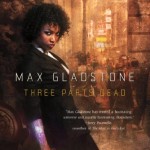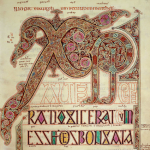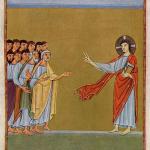On October 29th, Max Gladstone will release his second novel, Two Serpents Rise. His first novel Three Parts Dead got him nominated for the John W. Campbell Award for Best New Writer and also caused me to share a very enjoyable bookclub brunch with friends in DC. Three Parts Dead, the first book in his Craft series, reframes some of the peculiarities of the modern, entangled economy in a fantastical and theologically rich world. In his novels, the power of prayer is often regulated by contract law, and sorcerers are trying to work out how to gain the gifts of the gods without doing anything as weak as worshiping them.
In celebration of the newest book in his series, I’ll be running a Q&A with Gladstone about his work today and tomorrow, building to a review of Two Serpents Rise on release day. So, without further ado…
Your books aren’t written in chronological order (the events of Two Serpents Rise precede those of Three Parts Dead). How do you decide how to space the works and whether you’ll be putting a new story in between two existing ones. Will there ever be non-integer stories?
Non-integer stories would be a great title challenge! We could do a whole irrational series: “Dead i Well May Be.” “Portrait of Φ Artist as a Young Man.” “The Life of π.” I’ll probably stick to integers, though I might repeat integers, much to the horror of my publisher. We’ll see.
By the time I’m finished with one book I often know the story I have to tell next, since while editing I relax by planting seeds of new ideas. “What will to happen to this character?” Or: “What’s the analogue of this particular financial situation in the world I’ve built?” Sometimes, to write the next book I’m excited to write, I need to skip down or up the timeline a little.
The spacing between books is determined by the way that excitement intersects with causality. What needs to have happened in order to get my characters in position for the next story? How long did that take? And—the big question for determining how many books I want to fit into the empty space—how much crisis do I want to occur in the interval? An exciting book often feels like trauma for characters. What’s the old saying: “An adventure is someone else having a hell of a tough time a thousand miles away?” If I don’t want all of my characters to be giant messes of PTSD, they need time to react to what’s happened to them in previous books, and integrate that stuff into their personality. (Or fail to do so!) The main characters of Two Serpents Rise need a decent amount of time, and at least one major crisis, to get into the position we’ll see in Full Fathom Five, which is the next book in the sequence. Main characters of Three Parts Dead, likewise. So that means there needs to be at least one book between Three Parts Dead and Two Serpents Rise and the next book, probably featuring characters from both novels—so, include a novel’s worth of space.
How do you keep track of/expand your worldbuilding? Is there a set list of questions you ask yourself about a city and culture as you create it? When you start fleshing out a deity, does your mind run ahead to questions like “Which kinds of heresies does this theology tend toward?”
I have a monster timeline in a Google spreadsheet. Four books in, that’s where I go to remember the dates of characters’ births, deaths, major live events, historical precursors, revolutions, battles, and so on. The God Wars. When Ms. Kevarian was born. The fall of Dresediel Lex, and the birth of the Hidden Schools. Seril’s death. Tara’s matriculation. Otherwise, I’d get all Billy Pilgrim, having this nation’s war before that character’s marriage when it needs to be the other way around! Not to mention the characterization issues: thirty-year-old mortals think differently from those in their early twenties. Some of my characters are gods and Deathless Kings and the like, and don’t have to worry about lost opportunities, aging, and so on in the same way we do. Most aren’t, and do.
That timeline reflects key events in books I’ve written, since they’re the firmest truth. I have notebooks full of history sketches, maps, myths, and interpretations, a bit of primary-source material (some sections of a History of the God Wars are buried deep within my email, as are pieces of metacriticism on Gerhardt)—nowhere close to Tolkien, I’m not that systematic. But all that material is sort of fanon of my own work. Some of it may need to change, and much is still vague and unfilled.
I think of worldbuilding kind of like Go. In joseki stage, opening stage, you play loose structures. A stone in a corner serves as a placeholder for a structure you want to build there later. As the game proceeds, you fill in the gaps and connect these placeholders, these bold vanguard ideas, and your plan develops down weird new paths in the process, since opponents are wily and games are difficult to foresee. In joseki you play for potential: I want a god of rain and sacrifice. In later stages you have to actually connect the potential you’ve built to the structure you are developing in response to your characters, your research, your previous work. Otherwise that initial idea will wilt. So, sometimes that initial idea contains specifics: I want a heresy, I want a church. Sometimes those follow necessarily from the connections you need. Does that make sense?
















